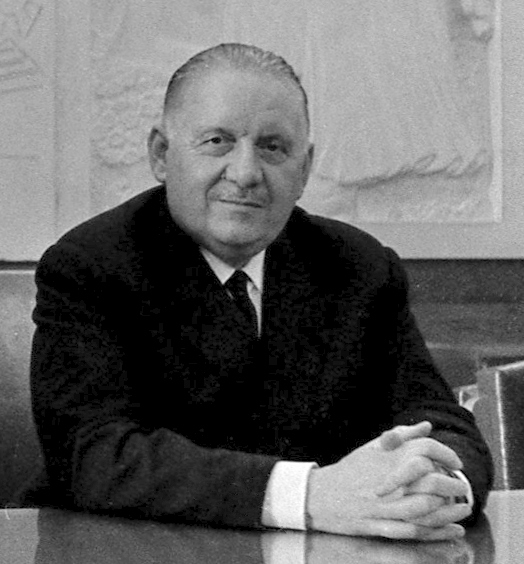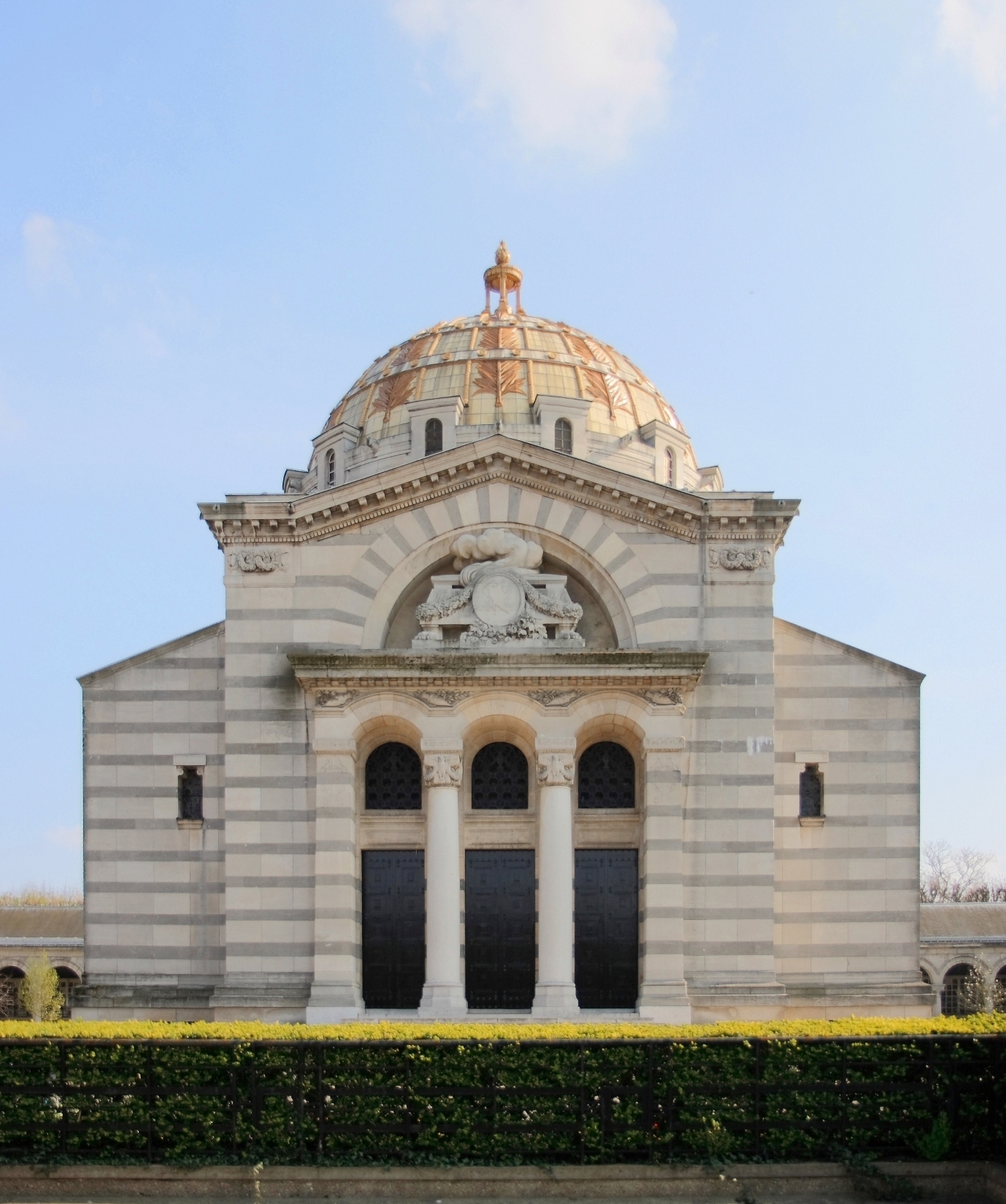|
Elvire Popesco
Elvira Popescu (; in French, Elvire Popesco; 10 May 1894 – 11 December 1993) was a Romanian-French stage and film actress and theatre director. During the 1930s and 1940s, she starred in a number of French comedy films. Life and career Popescu was born in Bucharest, and studied drama at the Music and Drama Conservatory in her native city, under the guidance of and Aristizza Romanescu. In 1911 was making the first Romanian films to deal with fiction. He employed Popesco as well as other leading actors like Nottara and Romanescu. The first two films were called "Fatal Love" and "Spin a Yarn". No copies are known of these films. Popesco made her debut at the National Theatre Bucharest at age 16.Mari Români In 1912, she played herself in the movie ''Independența României'', directed by . In 1919 she became artistic director of the Excelsior Theatre.Ciobanu In 1921, Popescu started Teatrul Mic, which she managed in parallel with the Excelsior. In 1923, she starred in ... [...More Info...] [...Related Items...] OR: [Wikipedia] [Google] [Baidu] |
Bucharest
Bucharest ( , ; ro, București ) is the capital and largest city of Romania, as well as its cultural, industrial, and financial centre. It is located in the southeast of the country, on the banks of the Dâmbovița River, less than north of the Danube River and the Bulgarian border. Bucharest was first mentioned in documents in 1459. The city became the capital of Romania in 1862 and is the centre of Romanian media, culture, and art. Its architecture is a mix of historical (mostly Eclectic, but also Neoclassical and Art Nouveau), interbellum ( Bauhaus, Art Deco and Romanian Revival architecture), socialist era, and modern. In the period between the two World Wars, the city's elegant architecture and the sophistication of its elite earned Bucharest the nickname of 'Paris of the East' ( ro, Parisul Estului) or 'Little Paris' ( ro, Micul Paris). Although buildings and districts in the historic city centre were heavily damaged or destroyed by war, earthquakes, and even Nic ... [...More Info...] [...Related Items...] OR: [Wikipedia] [Google] [Baidu] |
Théâtre Marigny
The Théâtre Marigny is a theatre in Paris, situated near the junction of the Champs-Élysées and the Avenue Marigny in the 8th arrondissement. It was originally built to designs of the architect Charles Garnier for the display of a panorama, which opened in 1883. The panorama was converted to the Théâtre Marigny in 1894 by the architect Édouard Niermans and became a home to operetta and other musical theatre. Panorama An earlier theatre on the site, the Salle Lacaze, became known in 1855, as the home of Jacques Offenbach's Théâtre des Bouffes-Parisiens, where he first built his reputation as a theatre composer. In 1864 this became the Théâtre des Folies-Marigny, which was demolished in 1881, giving way to a panorama built by Charles Garnier. In 1885, dioramas on Paris through the ages by Theodor Josef Hubert Hoffbauer (1839–1922), and on Jerusalem on the day of the death of Christ, by Olivier Pichat, were displayed. Theatre In 1894, Édouard Niermans converted ... [...More Info...] [...Related Items...] OR: [Wikipedia] [Google] [Baidu] |
François Mitterrand
François Marie Adrien Maurice Mitterrand (26 October 19168 January 1996) was President of France, serving under that position from 1981 to 1995, the longest time in office in the history of France. As First Secretary of the Socialist Party, he was the first left-wing politician to assume the presidency under the Fifth Republic. Reflecting family influences, Mitterrand started political life on the Catholic nationalist right. He served under the Vichy regime during its earlier years. Subsequently he joined the Resistance, moved to the left, and held ministerial office several times under the Fourth Republic. Mitterrand opposed Charles de Gaulle's establishment of the Fifth Republic. Although at times a politically isolated figure, he outmanoeuvered rivals to become the left's standard bearer in the 1965 and 1974 presidential elections, before being elected president in the 1981 presidential election. He was re-elected in 1988 and remained in office until 1995. Mitterran ... [...More Info...] [...Related Items...] OR: [Wikipedia] [Google] [Baidu] |
President Of The French Republic
The president of France, officially the president of the French Republic (french: Président de la République française), is the executive head of state of France, and the commander-in-chief of the French Armed Forces. As the presidency is the supreme magistracy of the country, the position is the highest office in France. The powers, functions and duties of prior presidential offices, in addition to their relation with the prime minister and Government of France, have over time differed with the various constitutional documents since the Second Republic. The president of the French Republic is the '' ex officio'' co-prince of Andorra, grand master of the Legion of Honour and of the National Order of Merit. The officeholder is also honorary proto-canon of the Archbasilica of Saint John Lateran The Archbasilica Cathedral of the Most Holy Savior and of Saints John the Baptist and John the Evangelist in the Lateran ( it, Arcibasilica del Santissimo Salvatore e dei Sant ... [...More Info...] [...Related Items...] OR: [Wikipedia] [Google] [Baidu] |
Molière Award
The Molière Award recognises achievement in live French theatre and is the national theatre award of France. The awards are presented and decided by the ''Association professionnelle et artistique du théâtre'' (APAT) and supported by the Ministry of Culture at an annual ceremony, called the Nuit des Molières ("Night of the Molières") in Paris. The awards are given for French productions and performances. The Molière Awards are considered the highest French theatre honour, the equivalent to the American Tony Award, the British Olivier Award and the Spanish Premios Max. The award was created by Georges Cravenne, who was also the creator of the César Award for cinema. The name of the award is an homage to the seventeenth-century French dramatist Molière. Awards by year and category 1987 Jury presided by Jean-Louis Barrault. Awards hosted by François Périer. * Best Actor - Philippe Clévenot, in ''Elvire Jouvet 40'' * Best Supporting Actor - Pierre Arditi, in ''La Ré ... [...More Info...] [...Related Items...] OR: [Wikipedia] [Google] [Baidu] |
Père Lachaise Cemetery
Père Lachaise Cemetery (french: Cimetière du Père-Lachaise ; formerly , "East Cemetery") is the largest cemetery in Paris, France (). With more than 3.5 million visitors annually, it is the most visited necropolis in the world. Notable figures in the arts buried at Père Lachaise include Michel Ney, Frédéric Chopin, Émile Waldteufel, Édith Piaf, Marcel Proust, Georges Méliès, Marcel Marceau, Sarah Bernhardt, Oscar Wilde, Thierry Fortineau, J.R.D. Tata, Jim Morrison and Sir Richard Wallace. The Père Lachaise is located in the 20th arrondissement of Paris, 20th arrondissement and was the first garden cemetery, as well as the first municipal cemetery in Paris. It is also the site of three World War I memorials. The cemetery is located on the Boulevard de Ménilmontant. The Paris Métro station Philippe Auguste (Paris Métro), Philippe Auguste on Paris Métro Line 2, Line 2 is next to the main entrance, while the station Père Lachaise (Paris Métro), Père Lachaise, on both ... [...More Info...] [...Related Items...] OR: [Wikipedia] [Google] [Baidu] |
Neuilly-sur-Seine
Neuilly-sur-Seine (; literally 'Neuilly on Seine'), also known simply as Neuilly, is a commune in the department of Hauts-de-Seine in France, just west of Paris. Immediately adjacent to the city, the area is composed of mostly select residential neighbourhoods, as well as many corporate headquarters and a handful of foreign embassies. It is the wealthiest and most expensive suburb of Paris. Together with the 16th and 7th arrondissement of Paris, the town of Neuilly-sur-Seine forms the most affluent and prestigious residential area in the whole of France. It has the 2nd highest average household income in France, at €112,504 per year (in 2020). History Originally Pont de Neuilly was a small hamlet under the jurisdiction of Villiers, a larger settlement mentioned in medieval sources as early as 832 and now absorbed by the commune of Levallois-Perret. It was not until 1222 that the little settlement of Neuilly, established on the banks of the Seine, was mentioned for the first t ... [...More Info...] [...Related Items...] OR: [Wikipedia] [Google] [Baidu] |
Sighet Prison
The Sighet prison, located in the city of Sighetu Marmației, Maramureș County, Romania, was used by Romania to hold criminals, prisoners of war, and political prisoners. It is now the site of the Sighet Memorial Museum, part of the Memorial of the Victims of Communism. History The prison in Sighetu Marmației (often referred to just as "Sighet") was built in 1897, when the area was part of the Austro-Hungarian Empire, as a prison for criminal offenders. Between 1897 and 1945 here was a wonderful garden. After 1945, at the end of World War II, the repatriation of Romanians who had been prisoners of war and deportees in the Soviet Union was done through Sighet. Starting in August 1948, Sighet Prison was set aside for political opponents of the government. At first, it held students, pupils, and peasants from the Maramureș region. The first batch of such detainees consisted of 18 students from , accused of demonstrating against the communist regime; they were brought in o ... [...More Info...] [...Related Items...] OR: [Wikipedia] [Google] [Baidu] |
René Clément
René Clément (; 18 March 1913 – 17 March 1996) was a French film director and screenwriter. Life and career Clément studied architecture at the École des Beaux-Arts where he developed an interest in filmmaking. In 1936, he directed his first film, a 20-minute short written by and featuring Jacques Tati. Clément spent the latter part of the 1930s making documentaries in parts of the Middle East and Africa. In 1937, he and archaeologist Jules Barthou were in Yemen making preparations to film a documentary film, documentary, the first ever of that country and one that includes the only known film image of Imam Yahya. Almost ten years passed before Clément directed a feature but his French Resistance film, ''La Bataille du rail'' (1945), gained much critical and commercial success. From there Clément became one of his country's most successful and respected directors, garnering numerous awards including two films that won the Academy Award for Best Foreign Language Film ... [...More Info...] [...Related Items...] OR: [Wikipedia] [Google] [Baidu] |
Purple Noon
''Purple Noon'' (french: Plein soleil; it, Delitto in pieno sole; also known as ''Full Sun'', ''Blazing Sun'', ''Lust for Evil'', and ''Talented Mr. Ripley'') is a 1960 crime thriller film directed by René Clément, loosely based on the 1955 novel ''The Talented Mr. Ripley'' by Patricia Highsmith. The French/Italian international co-production stars Alain Delon in his first major film, along with Maurice Ronet (as Philippe Greenleaf) and Marie Laforêt (as Marge); Billy Kearns (an expatriate American actor well-liked in France) plays Greenleaf's friend Freddy Miles, and Romy Schneider appears briefly in an uncredited role as Freddie Miles' companion. The film, principally in French, contains brief sequences in Italian and English. Screenwriter Paul Gégauff wrote a variation on the same story in 1968 when he worked on ''Les biches'' for Claude Chabrol. Highsmith's source novel was adapted again in 1999 under the original title, ''The Talented Mr. Ripley''. Plot The American To ... [...More Info...] [...Related Items...] OR: [Wikipedia] [Google] [Baidu] |
.jpg)




